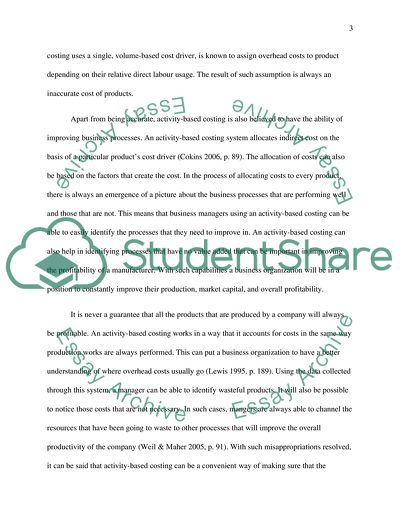Cite this document
(Discuss the reasons why activity-based costing may be preferred to Essay - 1, n.d.)
Discuss the reasons why activity-based costing may be preferred to Essay - 1. https://studentshare.org/finance-accounting/1859178-discuss-the-reasons-why-activity-based-costing-may-be-preferred-to-traditional-absorption-costing-in-the-mordern-manufacturing-environment
Discuss the reasons why activity-based costing may be preferred to Essay - 1. https://studentshare.org/finance-accounting/1859178-discuss-the-reasons-why-activity-based-costing-may-be-preferred-to-traditional-absorption-costing-in-the-mordern-manufacturing-environment
(Discuss the Reasons Why Activity-Based Costing May Be Preferred to Essay - 1)
Discuss the Reasons Why Activity-Based Costing May Be Preferred to Essay - 1. https://studentshare.org/finance-accounting/1859178-discuss-the-reasons-why-activity-based-costing-may-be-preferred-to-traditional-absorption-costing-in-the-mordern-manufacturing-environment.
Discuss the Reasons Why Activity-Based Costing May Be Preferred to Essay - 1. https://studentshare.org/finance-accounting/1859178-discuss-the-reasons-why-activity-based-costing-may-be-preferred-to-traditional-absorption-costing-in-the-mordern-manufacturing-environment.
“Discuss the Reasons Why Activity-Based Costing May Be Preferred to Essay - 1”. https://studentshare.org/finance-accounting/1859178-discuss-the-reasons-why-activity-based-costing-may-be-preferred-to-traditional-absorption-costing-in-the-mordern-manufacturing-environment.


